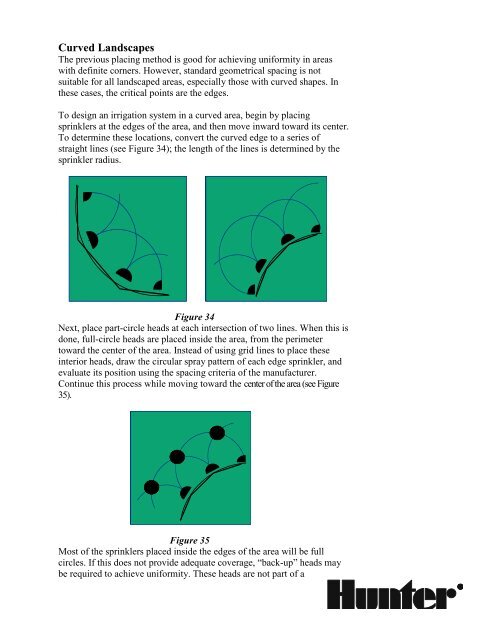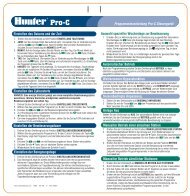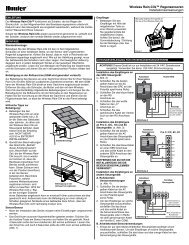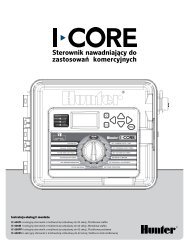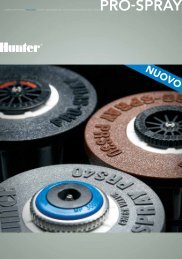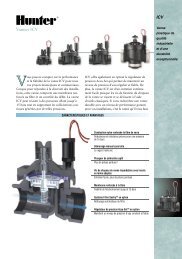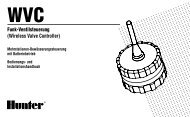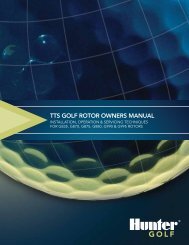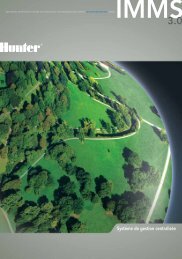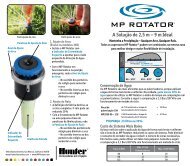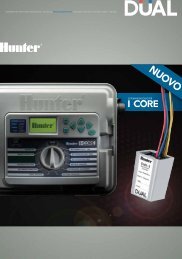Irrigation Professionals with questions about ... - Hunter Industries
Irrigation Professionals with questions about ... - Hunter Industries
Irrigation Professionals with questions about ... - Hunter Industries
You also want an ePaper? Increase the reach of your titles
YUMPU automatically turns print PDFs into web optimized ePapers that Google loves.
Curved LandscapesThe previous placing method is good for achieving uniformity in areas<strong>with</strong> definite corners. However, standard geometrical spacing is notsuitable for all landscaped areas, especially those <strong>with</strong> curved shapes. Inthese cases, the critical points are the edges.To design an irrigation system in a curved area, begin by placingsprinklers at the edges of the area, and then move inward toward its center.To determine these locations, convert the curved edge to a series ofstraight lines (see Figure 34); the length of the lines is determined by thesprinkler radius.Figure 34Next, place part-circle heads at each intersection of two lines. When this isdone, full-circle heads are placed inside the area, from the perimetertoward the center of the area. Instead of using grid lines to place theseinterior heads, draw the circular spray pattern of each edge sprinkler, andevaluate its position using the spacing criteria of the manufacturer.Continue this process while moving toward the center of the area (see Figure35).Figure 35Most of the sprinklers placed inside the edges of the area will be fullcircles. If this does not provide adequate coverage, “back-up” heads maybe required to achieve uniformity. These heads are not part of a


